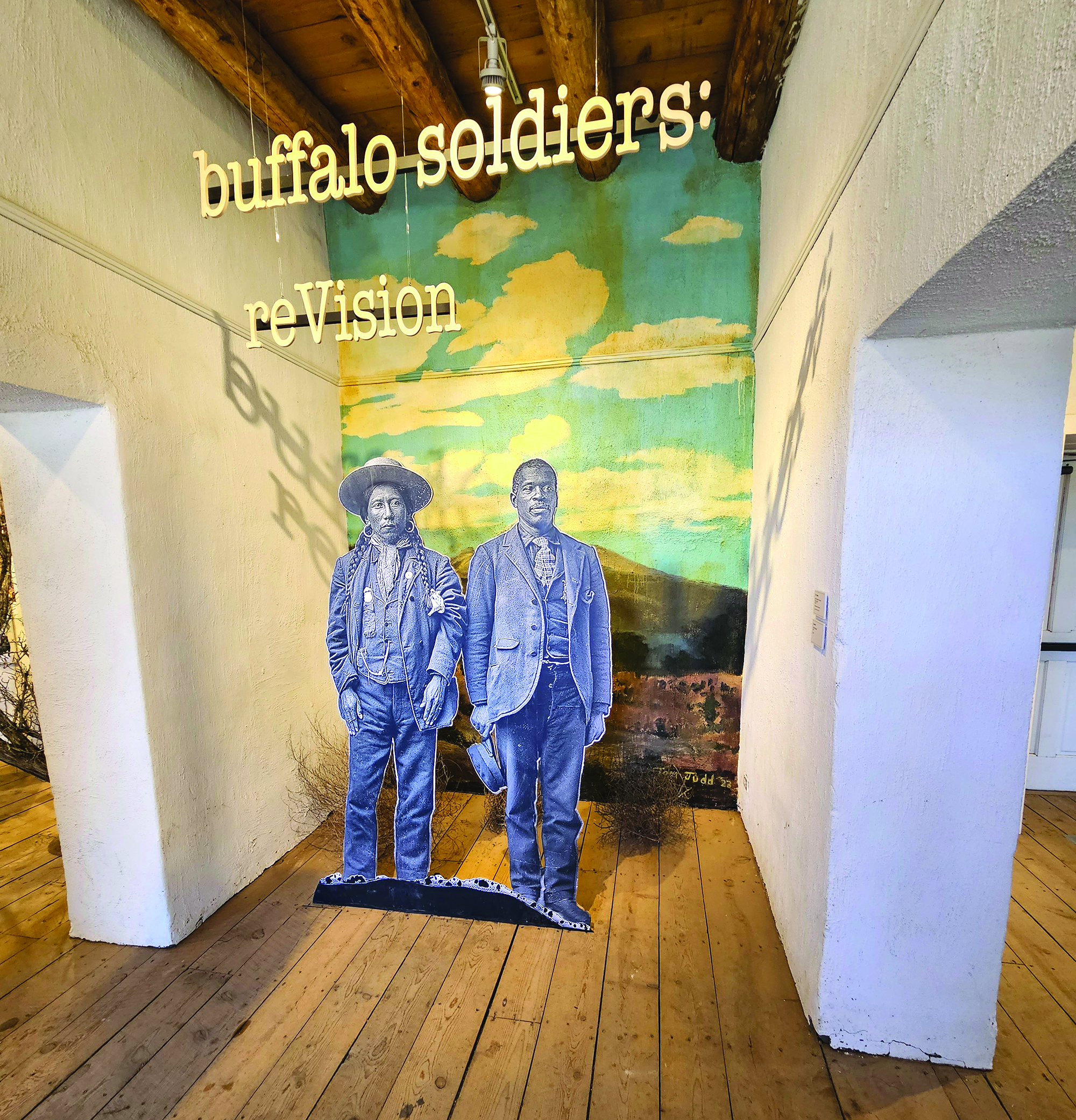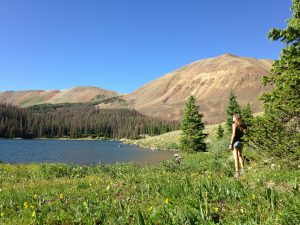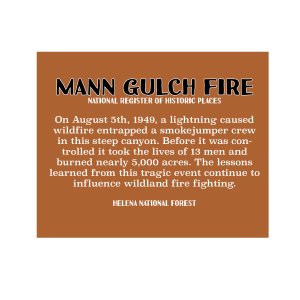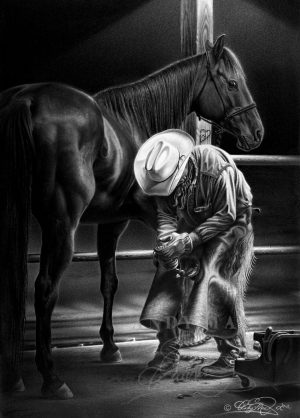THE FORT GARLAND MUSEUM and Cultural Center continues to establish unique exhibits that highlight not just an honest look at local history but also combine that with art, poetry and more to create immersive cultural experiences. Their newest exhibit, buffalo soldiers: reVision opened on June 24 and follows in the same vein of striking, multifaceted artwork to tell a story often overlooked by history.
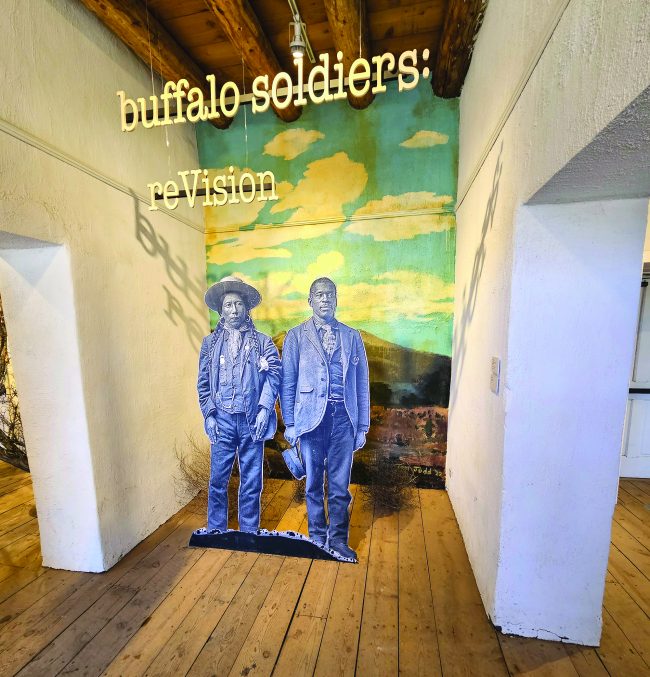
The opening ceremony was blessed by Johnny Taylor Valdez, whose great-grandfather, Jack John Taylor, is featured in the exhibit’s centerpiece photo. His great-grandfather married Kitty Cloud, a descendant of Ute Chiefs native to the San Luis Valley area. Taylor Valdez also brought a multicultural lens to the blessing and introduction. He reflected on the lifestyles of the Indigenous people who originally resided in the area and noted how much of our system of government is also borrowed from them: “They created a Senate … a House … a Constitution ….” But he also considered the freedom they experienced before the arrival of colonizers, pointing out they had “no jails, no insane asylums, no locking people away” and “seeing soldiers taking the land was foreign to the Ute People.” Taylor Valdez also reflected on the perspective of the Buffalo Soldiers and noted his great-grandfather “was a crazy, fun character who liked to gamble” and “gave land to the school, gave land to the church….” Taylor Valdez noted the exhibit honors teachers and artists and concluded, “The spirit of these people live in us and, in a good way, I hope they live in you too.”
Director of the Fort Garland Museum and Cultural Center, Eric Carpio, spoke next, explaining the idea for this exhibit started two years ago when he was working with artist Chip Thomas on the Unsilenced: Indigenous Enslavement in Southern Colorado exhibit, previously covered in this publication last year. They started the idea for this exhibit thinking they would feature two or three artists and ended up including eight. Carpio said they invited the input of several scholars and organizations dedicated to the history of the Buffalo Soldiers, including the Colorado Springs Buffalo Soldiers Memorial Committee; the Buffalo Soldiers of the American West; Dr. James Brooks from Athens, Georgia; Dr. Nick Signs from Alamosa and many others. Regarding walking the line between art and history, Carpio stated, “It’s just part of the way we do work.…We’re pretty fearless.”
Artist and visionary Dr. Chip Thomas, also a physician, spoke next, acknowledging the presence and contributions of his fellow artists, including Esther Belin, Mahogany L. Browne, Rosie Carter, Gaia, Andre Leon Gray, Theodore A. Harris and Tom Judd. Thomas noted that, when he first began the project, he didn’t know much about the history of the Buffalo Soldiers at all, “besides the Bob Marley song,” he joked. He began with a residency to learn more about their experiences. Thomas’ fingerprint is evident in the similarities between the Buffalo Soldiers exhibit and the “Unsilenced” exhibit, with blown-up photographs adorning the walls of the historical fort along with three-dimensional fabric with messages showing through.
Esther Belin read a selection of her poetry, which is also featured throughout the exhibit. Belin said she had a hard time initially putting herself in the headspace to explore the perspective of the Buffalo Soldiers as well, noting that, as a Native woman she could only think of the forced marches her people were required to endure at the hands of the U.S. Government. Belin also noted in the exhibit that she was in the early stages of grieving the recent death of her husband, but found that grief to be a powerful and accurate motivator in her work. Belin noted she had to sift through that “and be sifted by it,” in order to achieve the poetry that she has written. She also noted the slogans used to recruit recently freed African Americans to the Buffalo Soldiers were similar in rhetoric to what was said about Native Americans becoming “civilized.” “The overlay of histories of people of color in the United States emerged the deeper I researched. Many times, I sat in complete horror, bewilderment — an emotional cellblock plastering a repetitive and strategic timeline of racialized Americana.” She read two poems during the opening ceremony, “Prayer for our flag” and “Eulogy for Cathay Williams.”
Cathay Williams was the subject of multiple works in the reVision exhibit, including Gaia’s work “Protection,” a series of two oil paintings taking both a historically accurate and arguably modern look at Cathay Williams’ legacy, a mixed media portrait of Williams by Tom Judd and a wall-sized blackout poem on fabric by Mahogany L. Brown. According to Buffalo Soldiers on the Colorado Frontier, a book by Nancy K. Williams available for purchase at the museum, Cathay Williams was enlisted as a Buffalo Soldier for two years under the alias William Cathy before being discovered as a woman when fighting smallpox.
Other pieces in the exhibit include recruitment posters for Buffalo Soldiers, promising $100 bounty, $13 a month (or $18-26 a month for officers and clerks) and state aid to families to join. Other, more extreme examples of recruitment propaganda declared “Fail Now, and Our Race is Doomed” and “Are Freedmen Less Brave Than Slaves” as taglines. One even called for “Indian Fighters” to join the cavalry.
The examination of what land is defined by and what it is worth is another underlying theme of the exhibit. A tree is a prominent piece of one room, adorned with photo cards with visitor contributions to the phrase “Land is …” hanging on the tree, examining the personal, political and spiritual meanings of land for individuals. Esther Belin also included a series of multimedia works on “Land for Sale” along with a poem, including this stanza:
Those of African descent, proceed
immediately to Fort Garland
Colonial sabers slaughtering Indigenous brethren, hostiles
Under the same flag. From this day
forward the rules governing
Buffalo soldier, Anglo expansionism enslaving, shackling down
A Reconstruction-era dog fight, dog
collar hold, pegged down deep.
Fort Garland is no stranger to the history of the Buffalo Soldiers as they have had an exhibit titled Buffalo Soldiers West: Black Soldiers in the Frontier Army. Williams’ book discusses the history of Fort Garland, the Buffalo Soldier regiments that were housed there and the immense amounts of land they were expected to cover throughout Colorado when stationed there. Williams’ book also covers in more depth the battles the Buffalo Soldiers had with various tribes throughout the Western frontier and the circumstances surrounding and leading up to those battles. However, buffalo soldiers: reVision really invites the visitor to consider the individual soldiers’ motivations and potential internal conflicts when contributing to the oppression of another minority group. It also invites the visitor to examine their perspectives on the meaning of abstractions like freedom and land and how those perspectives intersect with historical ones.

